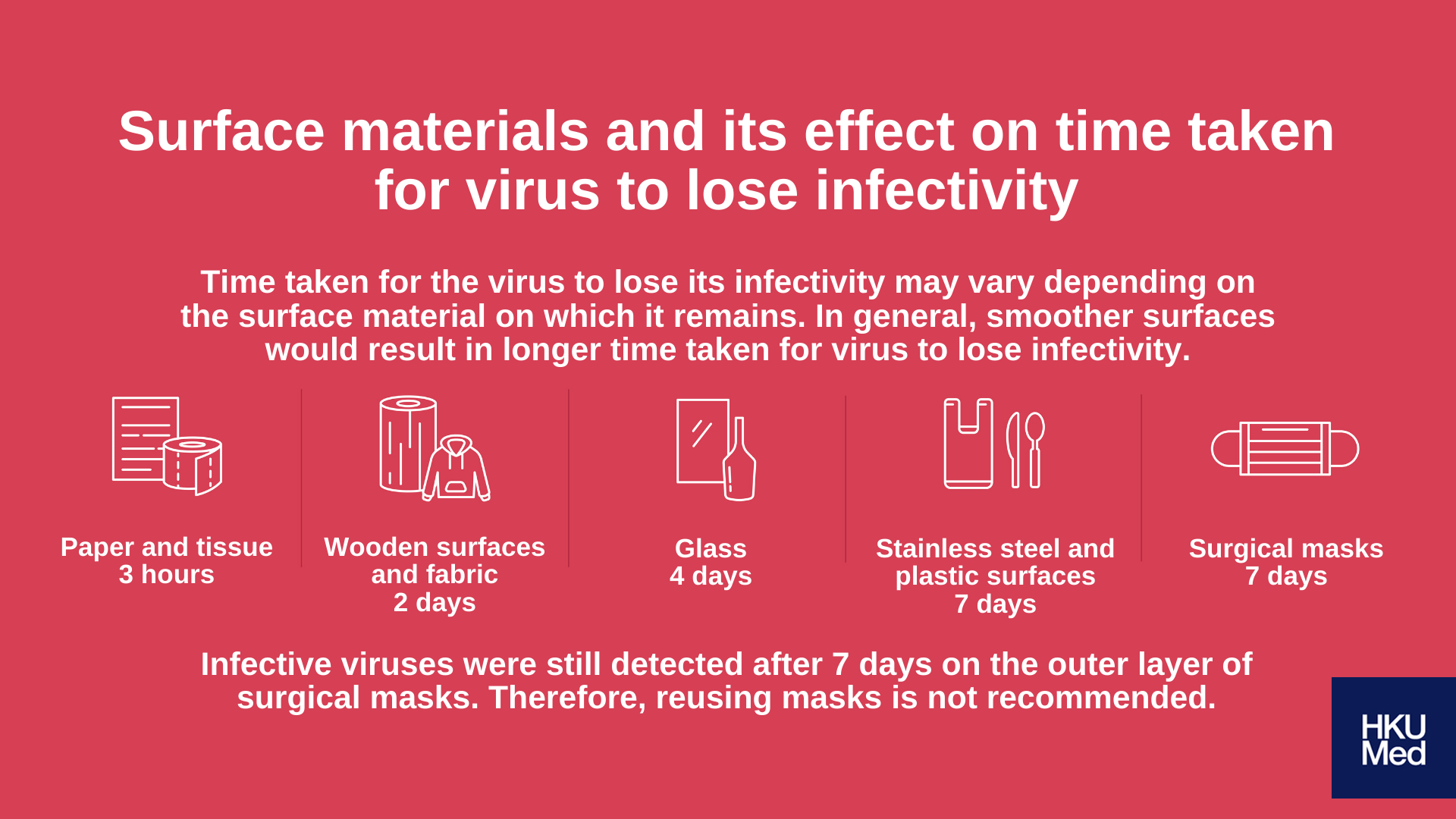During this pandemic, we have been advised to stay vigilant when it comes to disinfecting apparel and personal belongings upon returning home. However, without understanding how long it takes until the coronavirus loses its infectivity under different conditions, lingering fears remain that traces would stay on surfaces even after cleaning.
To address these concerns, we spoke with Professor Leo Poon, Division Head of the Public Health Laboratory Sciences at the School of Public Health, about the latest findings from his team on factors affecting the duration of infectivity of the coronavirus, and how we can protect ourselves by carrying out thorough and effective disinfection.
Q1. Are higher temperatures more likely to cause loss of infectivity in viruses?

Common knowledge says higher temperature are generally not ideal for viruses; our study further examines how different temperatures can have varying effects on the amount of time it takes for the virus to lose its infectivity. To test this hypothesis, our team incubated the virus and observed how long it would take for it to lose infectivity at different temperatures.
- At 4°C, the virus remained stable after 14 days
- At 22°C, the virus lost infectivity after 14 days
- At 37°C, the virus lost infectivity after 2 days
- At 56°C, the virus lost infectivity after 30 minutes
- At 70°C, the virus lost infectivity after 5 minutes
For those concerned about having exposed their clothes to the virus (i.e. you had come in contact with a confirmed patient), or if you are taking care of someone currently under self-quarantine, you may want to first soak your clothes in hot water (60°C) for 30 minutes before washing them in order to thoroughly disinfect.
Q2. Do different surfaces have an effect on the amount of time it takes for viruses to lose infectivity?

In addition to testing the impact of temperature on the infectivity of the virus, our team also tested how long it would take for the virus to lose infectivity on different surfaces. In summary, it seems the virus took a longer period of time to lose infectivity while on smoother surfaces, and less time on coarser ones:
- Printed paper and tissue paper: the virus lost infectivity after three hours.
- Wooden surfaces and fabric: the virus lost infectivity after two days.
- Glass surfaces: the virus lost infectivity after 4 days.
- Stainless steel surfaces and plastic: the virus lost infectivity after 4 to 7 days.
- Surgical mask: the virus still detectable after 7 days
It is worth noting that the outer layer of surgical masks told a different story, as the virus remained infective and detectable even after 7 days. Knowing this, we once again stress that face masks should not be re-used; one should also wash their hands thoroughly before and after putting on the mask.
Q3. Are disinfectants effective in causing viruses to lose infectivity?

Although the coronavirus may take longer to lose infectivity when under room temperature, disinfectants may be used to shorten this duration, thereby reducing chances of transmission and infection. Our team tested a wide variety of different disinfectants and found that all the following were effective in causing viruses to lose infectivity after five minutes of use:
- Household Bleach (1:49)
- Household Bleach (1:99)
- Ethanol (70%)
- Povidone-iodine (7.5%)
- Chloroxylenol (0.05%)
- Chlorhexidine (0.05%)
- Benzalkonium chloride (0.1%)
One point of note in the study: when hand soap was used at a ratio of 1:49, only half the number of the virus lost infectivity after five minutes; after 15 minutes however, all traces of the virus had lost its infectivity.
In conclusion, the key to protecting oneself against the coronavirus is proper disinfection with the right disinfecting agents at a strong enough concentration and for enough time. As long as we remain vigilant, there is no need to worry.
Read more about this topic here.